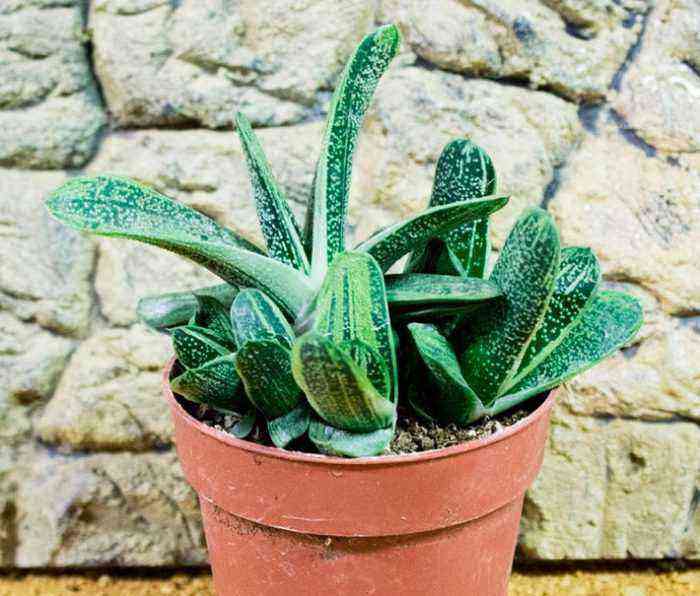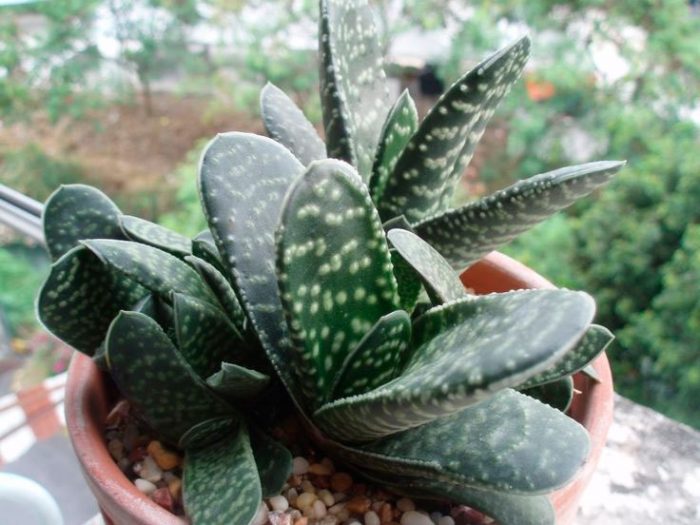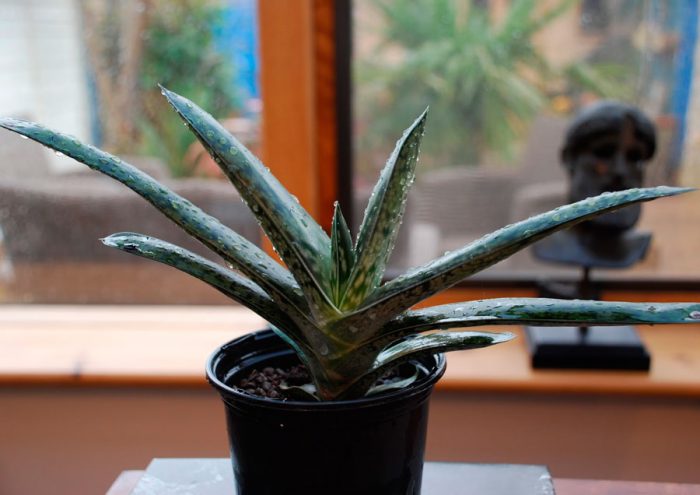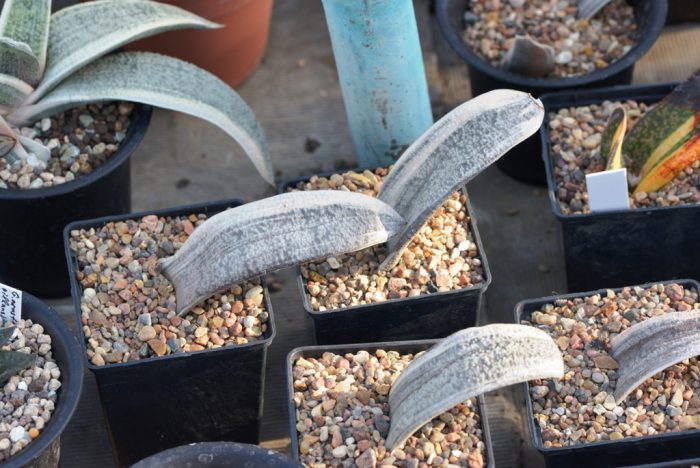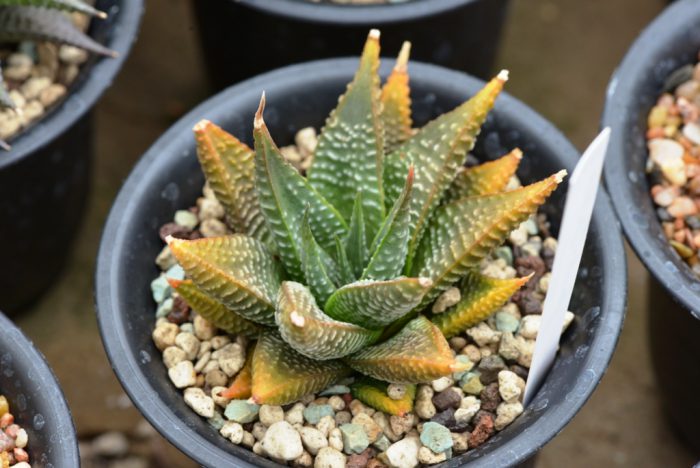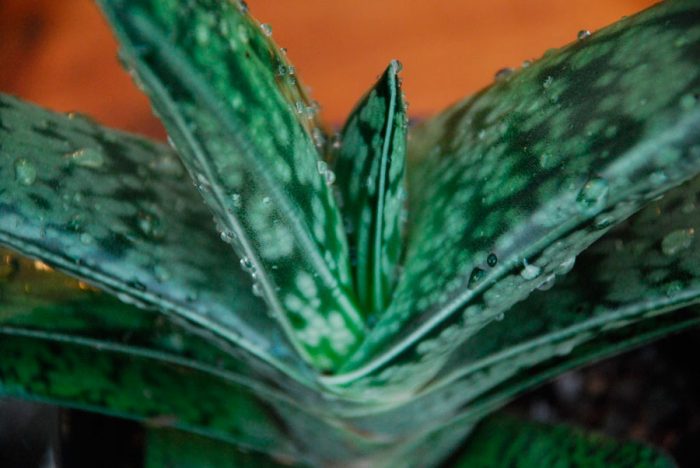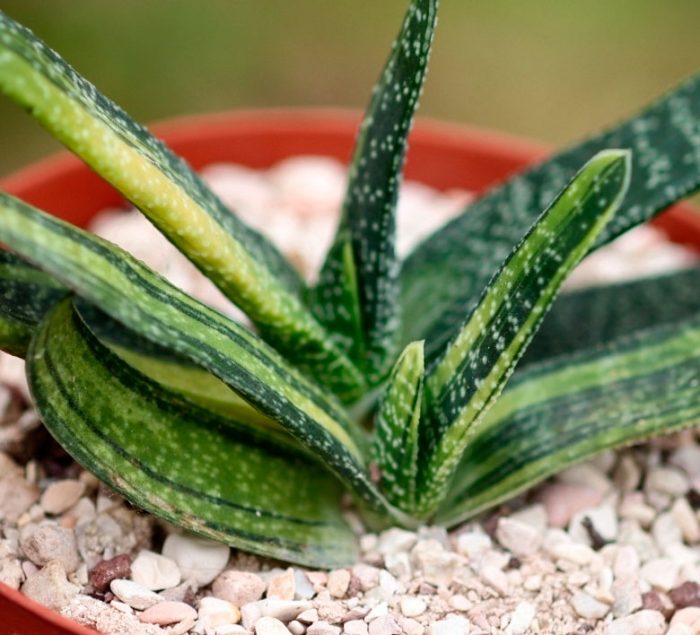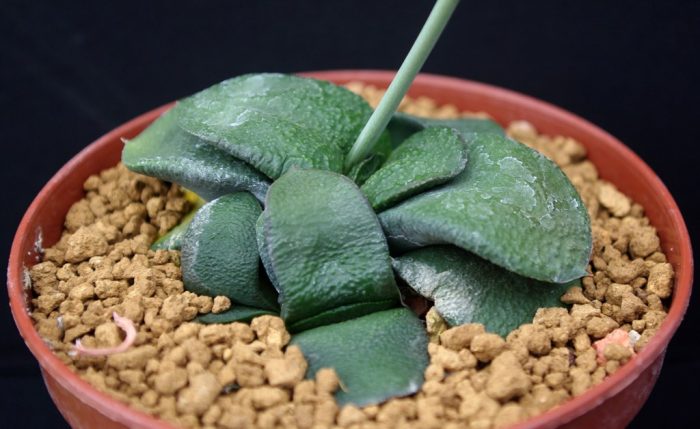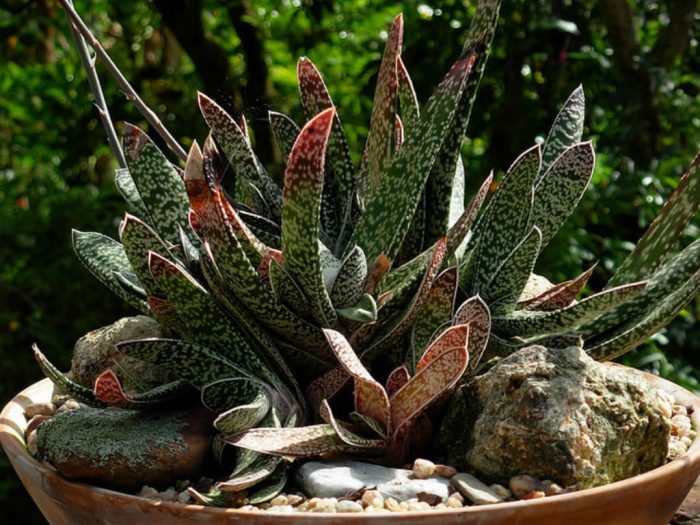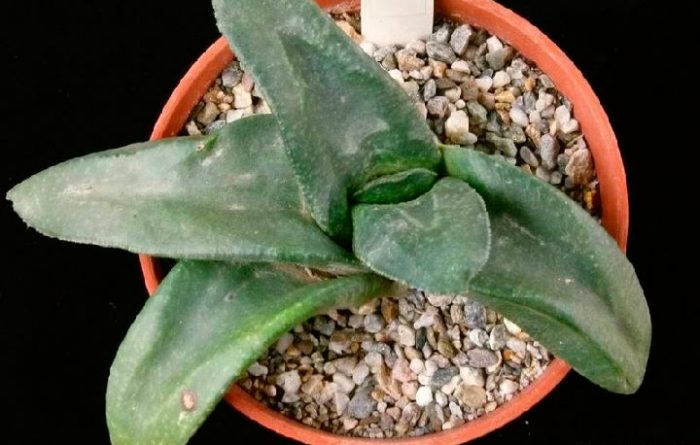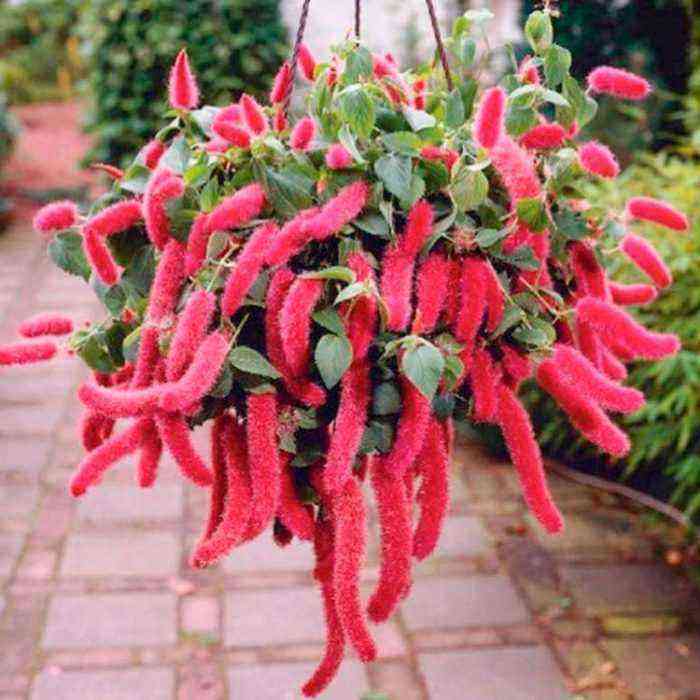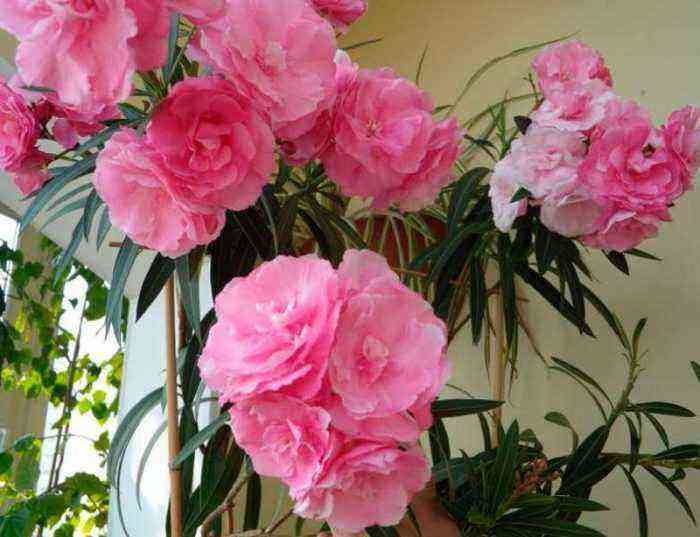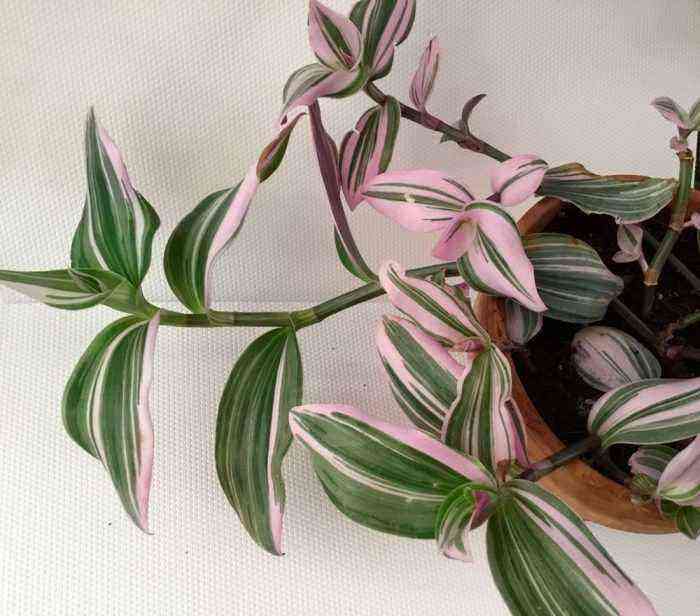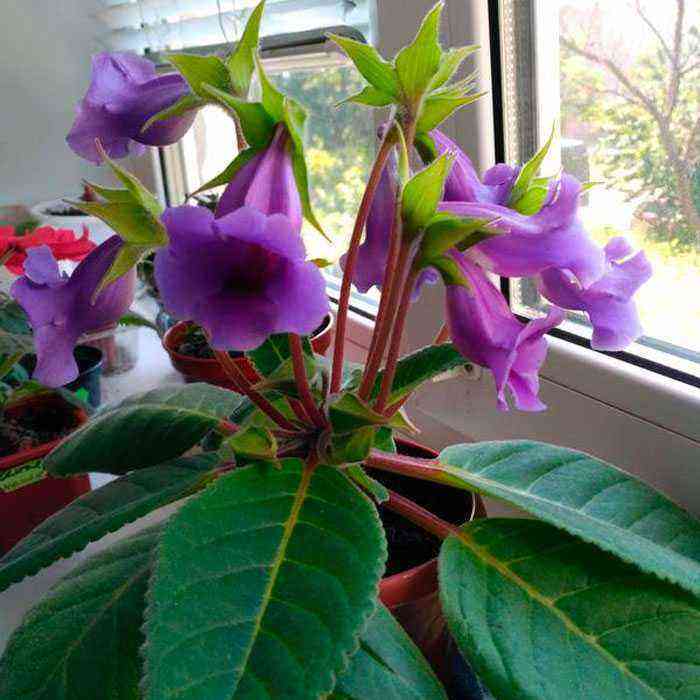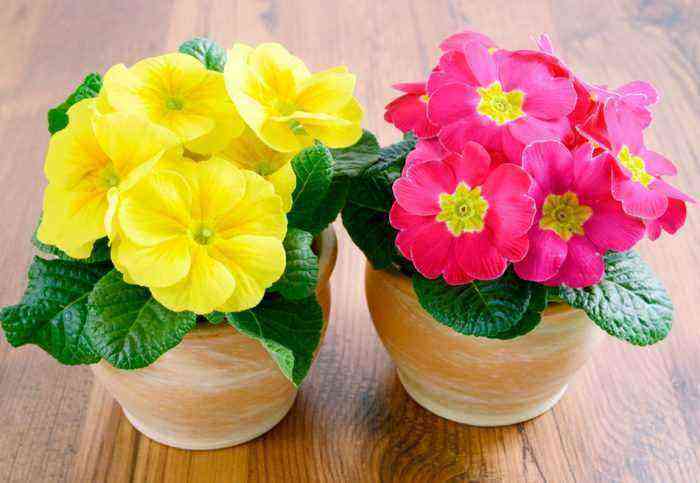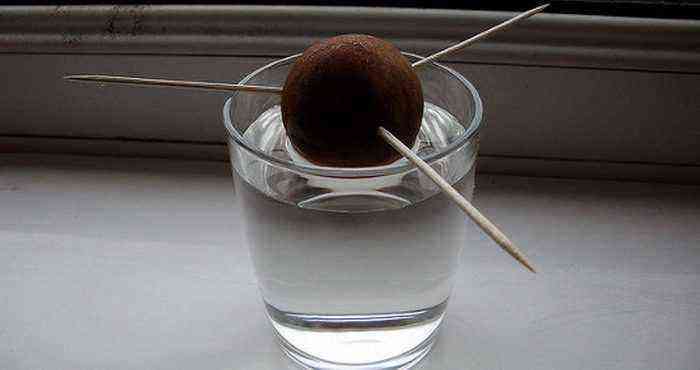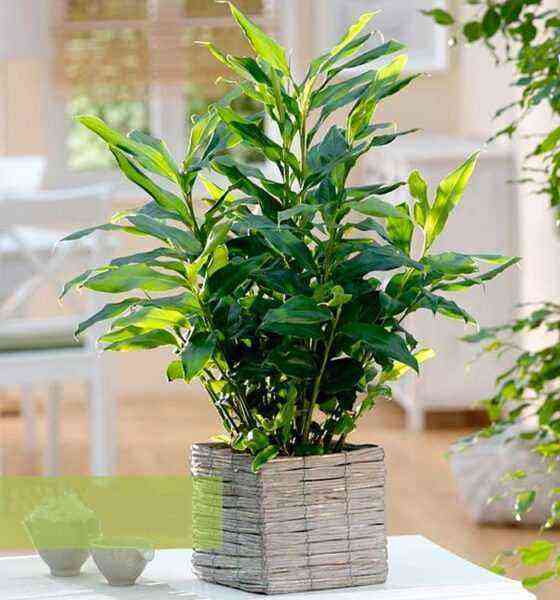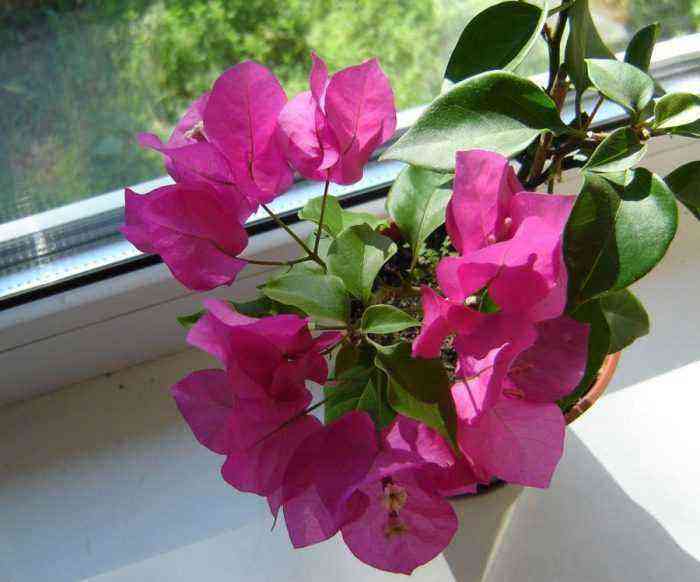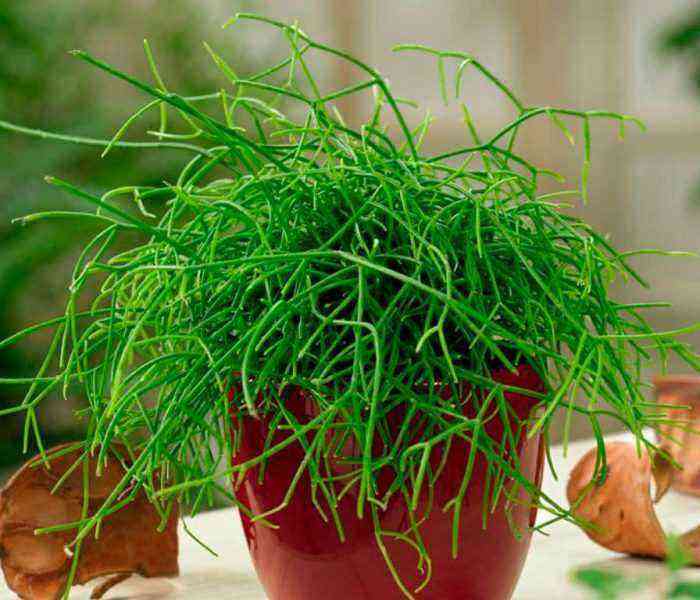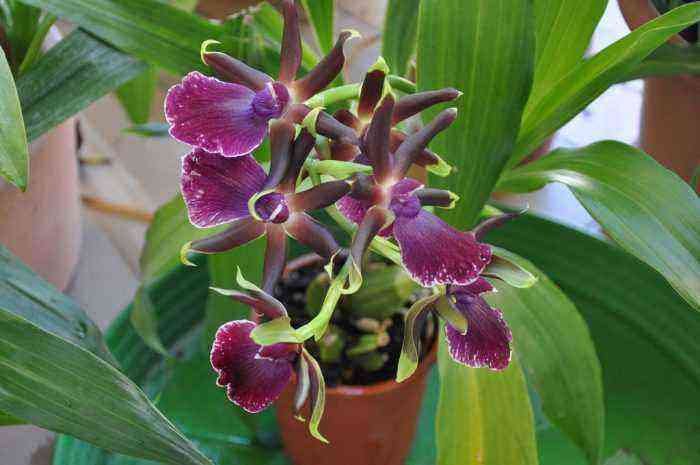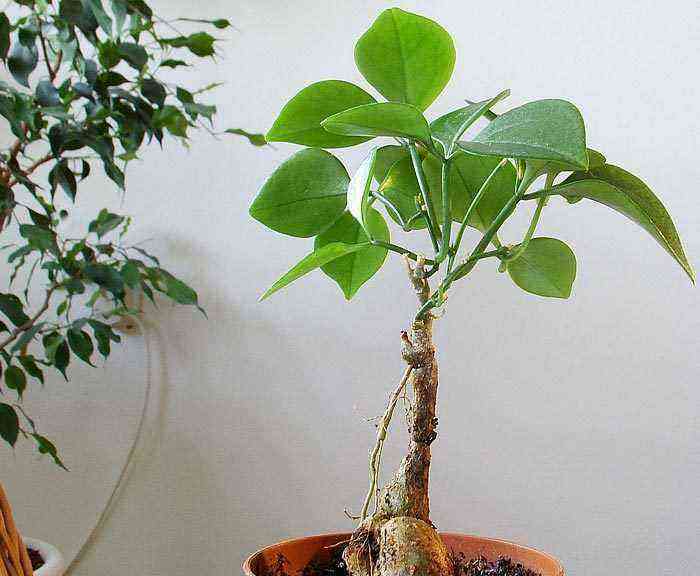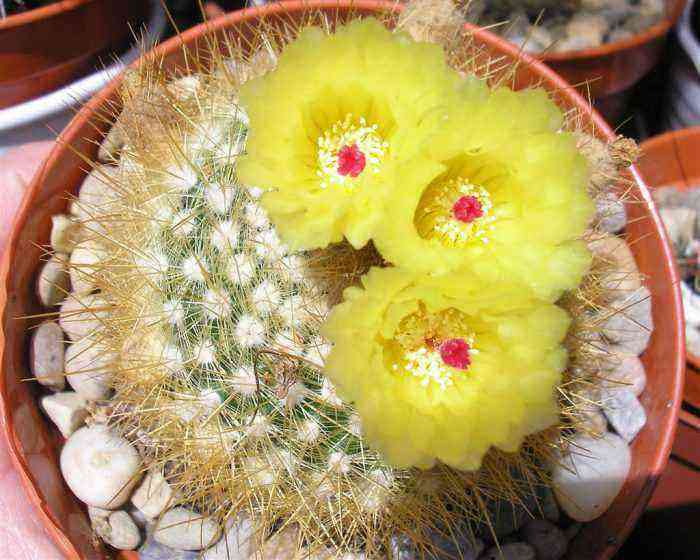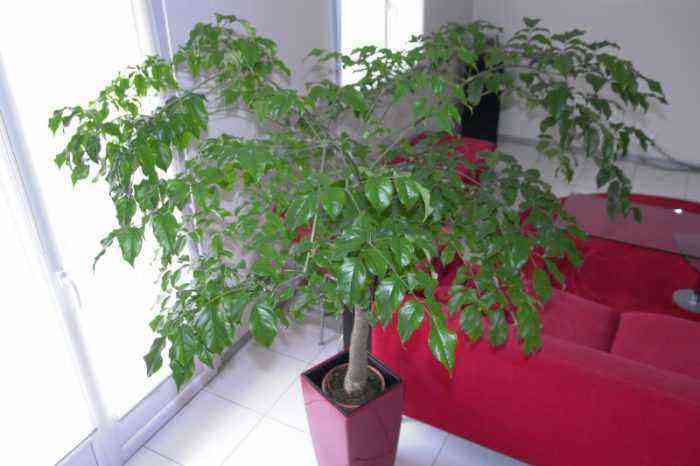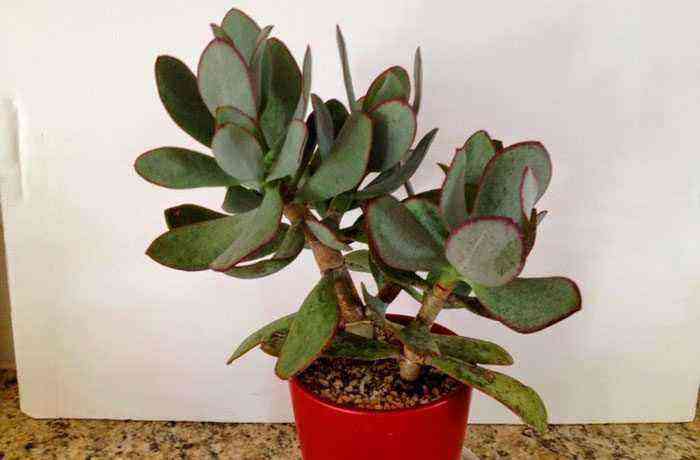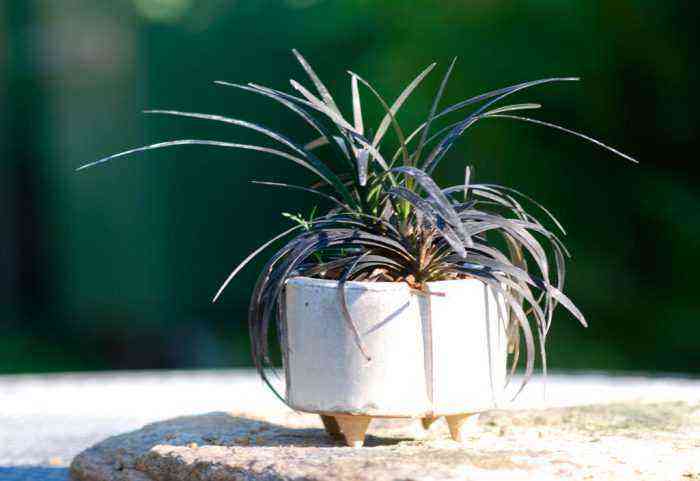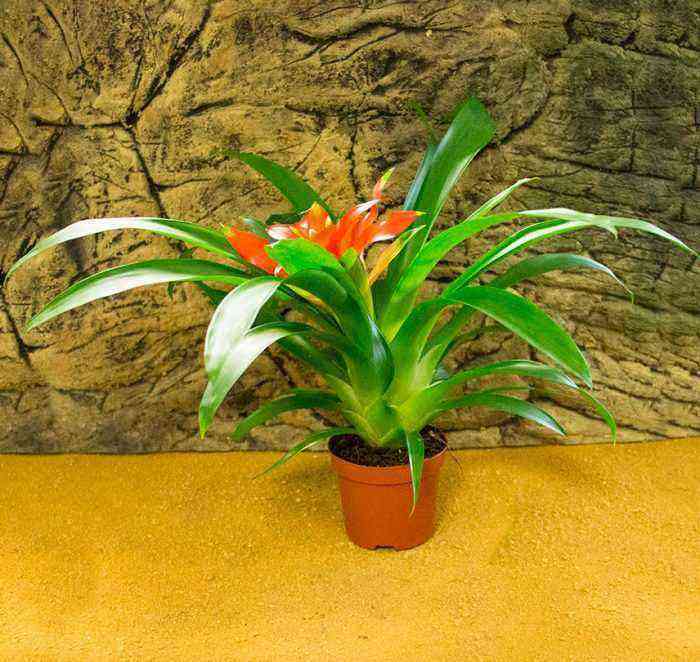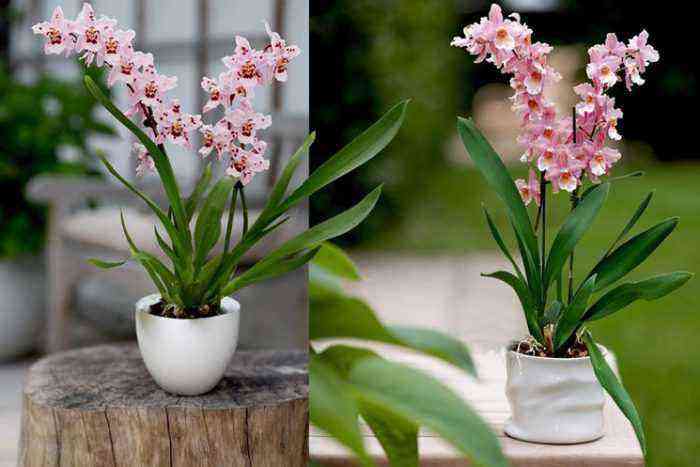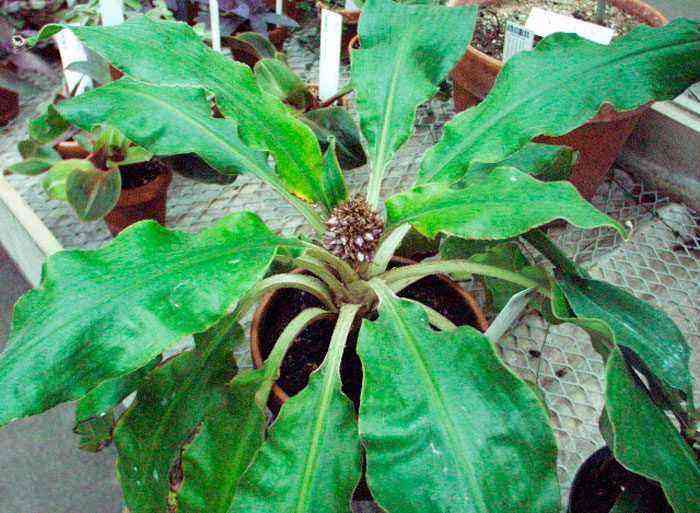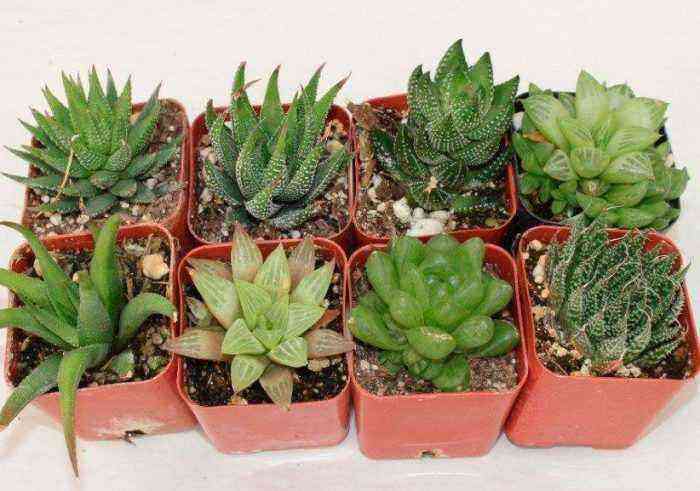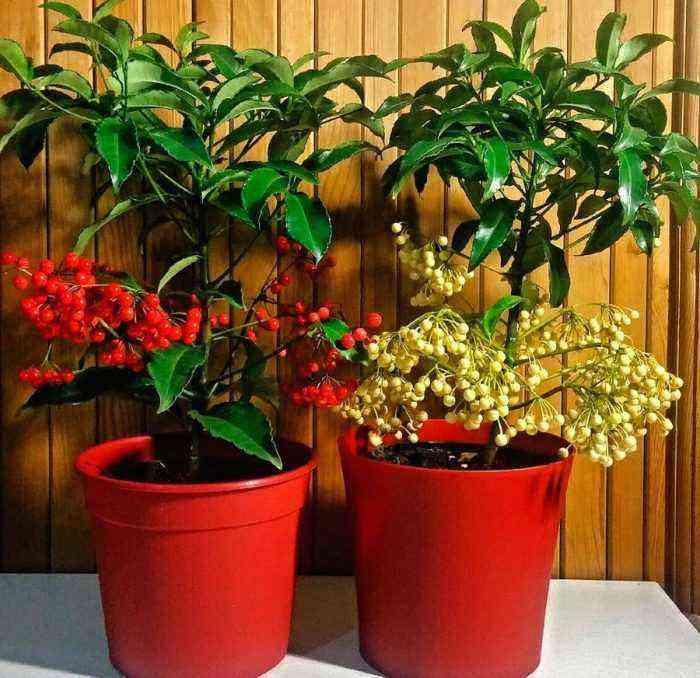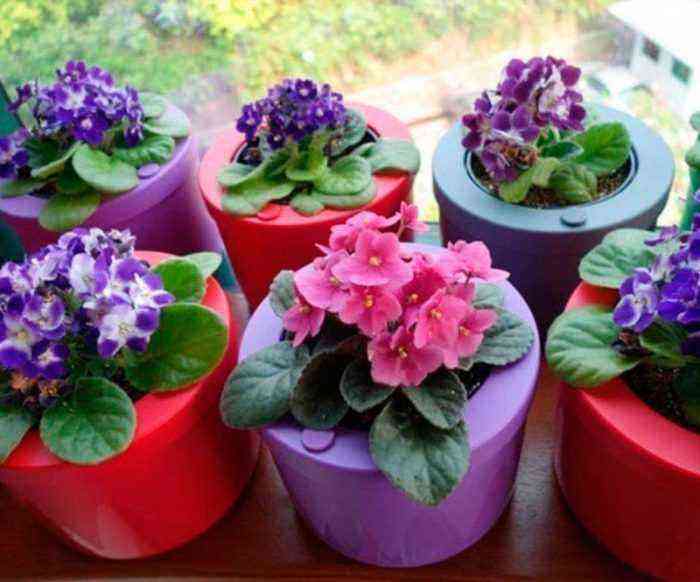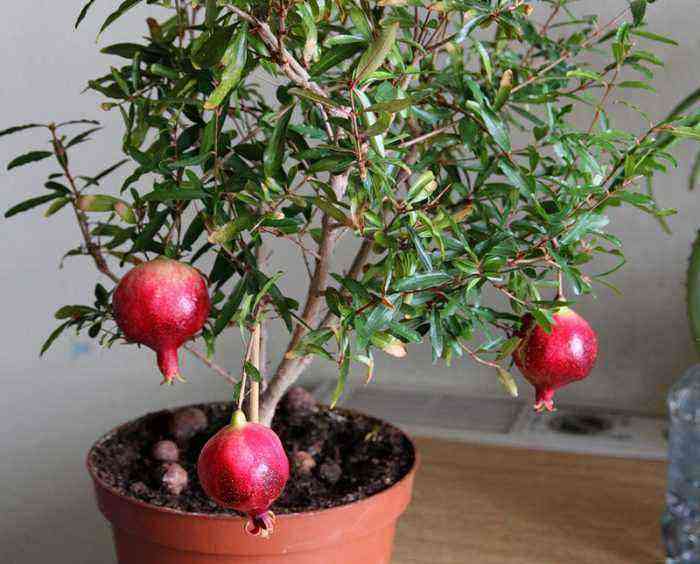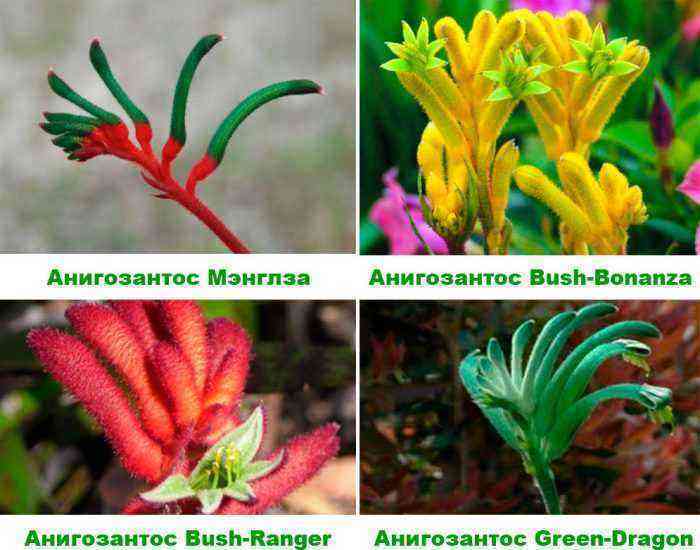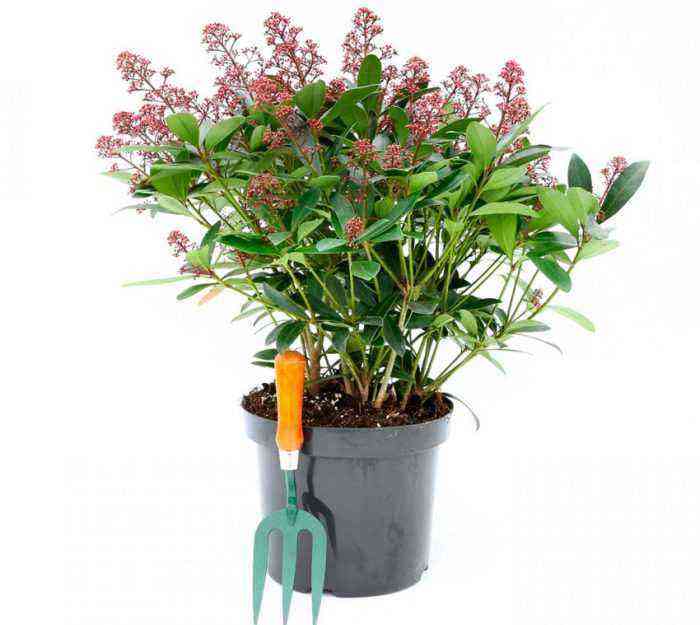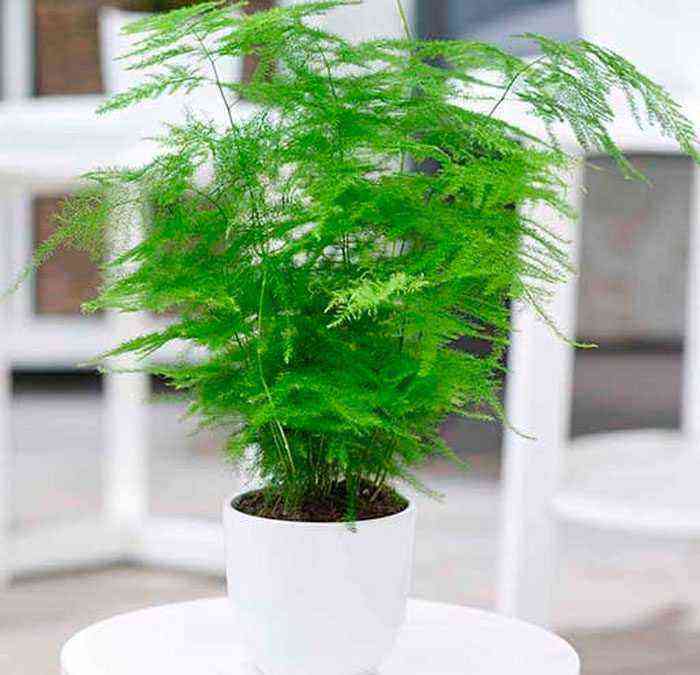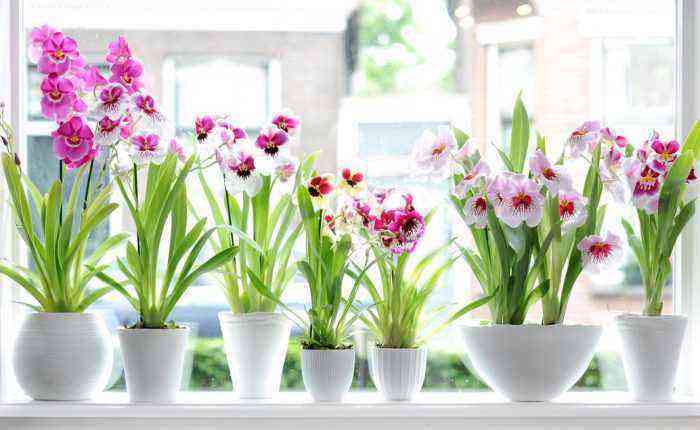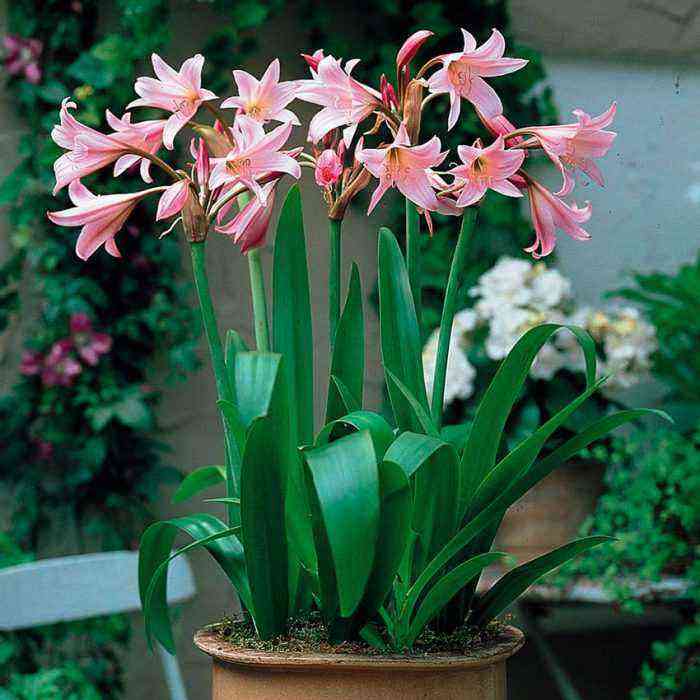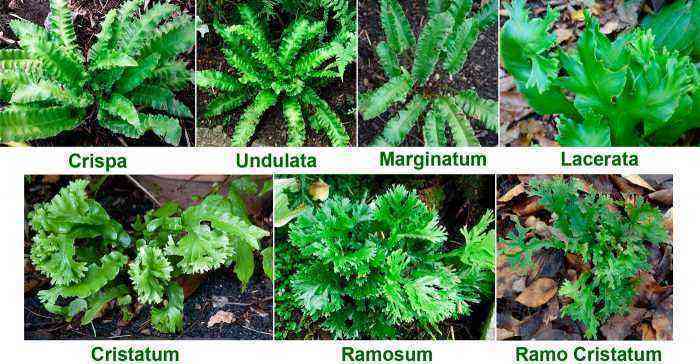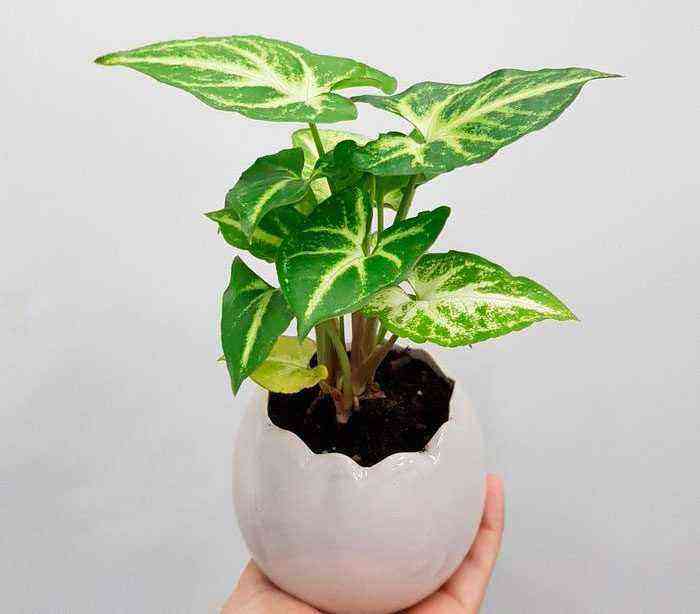Gasteria Is a succulent of the Asphodel family, native to the arid regions of South Africa. The plant got this strange name because of a peculiar swelling, which is found in the lower part of the perianth tube. The Latin word “gasltron”, which means in translation as a pot-bellied vessel, formed the basis of the name of this plant.
The strongly shortened stalk of the gastria is covered with hard leaves, which can have both two-row and multi-row arrangement. The leaves can have different shapes, while they are dark green in color with a rash of various spots and stripes located on the entire surface of the fleshy base. Some species have a rough surface, but mostly they are smooth leaves, from 3,8 to 25 cm long, with the leaves having the same width and a pointed or rounded top. Leaves can be flat or slightly concave. Gasteria blooms surprisingly beautifully, while the peduncle can reach a length of 40 to 70 cm. In middle-aged plants, it forms after each row of leaves. Inflorescences are collected in compact racemose peduncles, bright enough, yellow, green or orange. The flowers themselves have an original shape and look like amphorae, which hang temptingly on short legs. They bloom alternately, one after another for one month.
Home Gasteria Care
Lighting
Gasteria develops well and grows in the shade, but in the summer it prefers places where there is a lot of light, but direct sunlight does not reach there, especially at the peak of solar activity. For her at this time, eastern or western windows are more suitable. It can grow and develop on the northern window, with proper care, but it is unlikely to be able to bloom.
In summer, when it is warm, you can take it outside, but for this you need to find a suitable place for it, where there are no drafts, precipitation and sunlight. If this is not possible, then the room where the gasteria is located needs to be regularly ventilated.
Before the beginning of the autumn-winter period, good artificial lighting should be organized for it, and there is no need to shade the flower. For lighting, it is better to use fluorescent lamps located at a distance of 30-50 cm from the flower. The duration of the light baths can last for 8 hours. In this case, gastria can be kept under artificial lighting, providing it with light for 16 hours.
Temperature
Gasteria feels great at moderate temperatures, ranging from + 18-25 ° C. This is what concerns the spring-summer period, and in winter, when she has a dormant period, the temperature regime can be in the range of + 6-12 ° С. This temperature regime will ensure long and abundant flowering. If Gasteria is not exposed to such changes, then it is unlikely to be able to bloom. When this plant is kept in winter, at higher (more than + 15 ° C) temperatures, the inflorescences can dry out without leaving the outlet.
Air humidity
Gasteria does not need additional measures to maintain the necessary air humidity and calmly, without problems, tolerates the microclimate of modern apartments.
Watering
From early spring to late autumn, Gasteria needs abundant watering. This is done in the event that the soil in the pot begins to dry out, while you need to be careful and not allow too much, since Gasteria painfully tolerates excess moisture. In the autumn-winter period, watering is reduced to a minimum, especially when kept in colder conditions (below + 12 ° C).
Fertilizer
Somewhere from May to September, when the plant is actively developing, it needs feeding sessions with a frequency of 1 time in 2 weeks. For this, complex mineral fertilizers are used, intended for feeding cacti and succulents, while lower concentrations are used. Before the onset of the cold period, when the dormant period of the plant begins, fertilizing is canceled.
Flowering
With proper care, Gasteria can bloom at home, but it never blooms if it is on northern windows. Flowers can appear in spring or summer, while they look like an elongated bell of irregular shape, pink or reddish, about 2 cm long. These flowers are located on long peduncles up to 1 meter in size. On this peduncle there can be up to 50 pieces of flowers that delight others with their unique shape.
soil
To transplant a plant, a substrate should be prepared that has air and moisture permeable characteristics, with an acidity of Ph 5,5-7. Such a mixture is prepared from sheet (2 parts) earth, peat (1 part) and sand (0,5 part) with the addition of brick granules of various shapes. Great for cactus mix.
Transfer
Like all other types of indoor ornamental plants, Gasteria needs a regular (every 1-2 years) transplant, which is carried out in the spring or summer. Well-developed plants simply waddle into another, wider pot, while separating the children. In the presence of children, there is always an opportunity to quickly resolve the issue of growing a new plant. In this case, you should know that Gasteria develops better in tight pots. There must be drainage at the bottom of the pot.
Reproduction
Gasteria reproduces by seeds or by separating babies (daughter rosettes). To have seeds, you need to work hard and manipulate the pollination of the flowers of gastria. To do this, you need to shake the plant so that the pollen settles on the stigmas of the flowers, otherwise the seeds may not be seen if you hope for various insects, which are practically absent in the apartment. Somewhere in the middle of summer, the seeds will begin to ripen. If you do not plan to collect seeds, then after flowering, the peduncle can be cut off so that the flower does not waste energy on ripening the seeds. Gasteria and aloe are close to each other not only in form, but also in content. Some species of aloe are capable of pollinating Gasteria, which made it possible to obtain unique hybrids.
Since the seedlings of Gasteria develop rather slowly, they give preference to reproduction by children. This is done either at the end of spring or at the beginning of summer, when young plants are strengthened without problems.
After rooting, the plant is watered a little more often than other specimens. At first, young Gasteria develops very slowly, but already in the 2nd or 3rd year of life, it can bloom if the care is correct.
Diseases and pests
With proper care and conditions, there may not be any problems in growing gastria. As a rule, problems appear when the recommendations for its cultivation are violated.
Due to excessive watering, soil acidification is possible, which can certainly lead to rotting of the root system and other fungal diseases, and bacterial infections. With an excess of moisture, the leaves lose their color and become less elastic.
The appearance of soft brown spots on the leaves of the plant indicates a bacterial infection of the flower.
With a lack of moisture in the summer, the color of the leaves on the leaves of the plant changes: they become pale, while they do not have a decorative appearance.
Gasteria can be damaged by pests such as mealybugs, scale insects, aphids, etc.
Types of Gasteria with photos and names
Gasteria warty
It is a stemless perennial with leaves collected in a rosette located directly at the root system, which has many daughter rosettes. Leaves can grow up to 20 cm long, elongated-lingual, covered with small white warts. At the end of each leaf there is a rigid tip that smoothly turns into a lingual leaf.
In the axil of one of the upper leaves, a racemose inflorescence is formed with a height of 40 to 80 cm. The flowers themselves are not large, about 2-2,5 cm in length, and growing, as if drooping down. At the same time, they have a cylindrical perianth, which has a small swelling at the base, pink or red, the end of the lobes is greenish in color.
Gasteria spotted
It has a small stem, up to 30 cm long, covered with smooth, trihedral leaves, 16 to 20 cm long and about 4-5 cm wide, at the top of which there is a cartilaginous thorn. On the surface of the leaves there are barely noticeable spots of various shapes with an abstract arrangement. The leaves on the stem have a two-row arrangement, with a transition to a spiral. They have a dense structure or a slightly convex shape. The flowers are collected in a compact brush and have a funnel-shaped shape of a bright red hue with a green border along the contour.
Gasteria keeled
A stemless succulent with spirally arranged leaves with a sharp oblique keel on the underside. The lanceolate leaves of this plant are 12-15cm long and 5-7cm wide. At the same time, they have a dirty green color with white dots located on the surface, on the edges and on the keel of which you can see a rough-warty coating.
Gasteria is tiny
It is a miniature stemless perennial with many shoots emanating from the base. Lanceolate leaves, dark green in color, grow in length from 3,5 to 6 cm and have a glossy surface with white spots. The rosette can be up to 10cm in diameter. Shoots grow at the base of the outlet. The peduncle can reach a height of 30cm. The flowers are attractively shaped, up to 1,5 cm long, green above and pink below.
Gasteria saber
The leaves of this stemless succulent plant grow from a large rosette. The lower, broadly xiphoid leaves, up to 30cm long and up to 7cm wide, are ribbon-like. The surface of the leaves has a glossy green base with large dots. The peduncle has a length of up to 1 meter, on which there are bright red, curved flowers up to 5 cm in length.
Gasteria Armstrong
A unique plant of very small size, with thick, rigid leaves of a non-standard shape, about 3 cm long. At the ends of the leaves there are dull, rounded wrinkles, the surface of which is covered with small warts. The uniqueness of the plant is also in the fact that young plants first grow straight up, and then gradually take a horizontal position parallel to the previous, older leaves. This type of gastria blooms very quickly with small flowers, rarely located on the peduncle.
Gasteria bicolor
Herbaceous perennial up to 30 cm high with tongue-like leaves with uneven ribs. The length of such leaves can be in the range of 15-20 cm, and their width is 4-5 cm. The leaves are vertical but oblique. The color of the leaves is dark green, while the leaves have large white spots located on both sides of the leaf. This species has a more developed rosette of leaves than other species.
Gasteria soddy
It is a stemless succulent with leaves arranged in transverse rows, 10-14 cm long and up to 2 cm wide. The leaves are dark green in color, slightly convex in shape and have greenish-white spots scattered over the entire surface. This type of gastria blooms with red or pink flowers, about 2 cm in size.
Gasteria is whitish
The plant does not have a stem, while the leaves are formed in a large rosette and have a xiphoid shape. The leaves can be up to 30 cm long and about 7 cm wide. The flower produces a peduncle up to 1 meter high, which has weak branching. Flowers appear on the peduncle, a bright red hue and a curved shape.
Gasteria marble
This plant also lacks a stem, but has lingual, wide, marbled green leaves covered with white, silvery spots.
Gasteria triangular
Succulent rosette plant with two rows of leaves. The length of the leaves can be up to 20cm with a width of 3-4cm. There are sharp thorns at the tips of the leaves, 2-3mm long. On the surface of the leaves there are light green spots that have a kind of elongation and which have a parallel arrangement. The edges of the leaves have a cartilaginous-toothed shape, with a light sheen.
